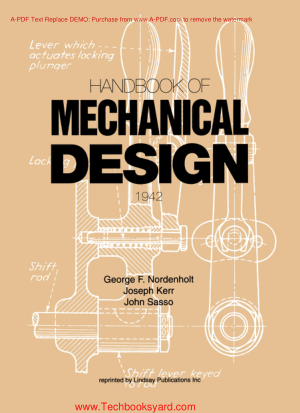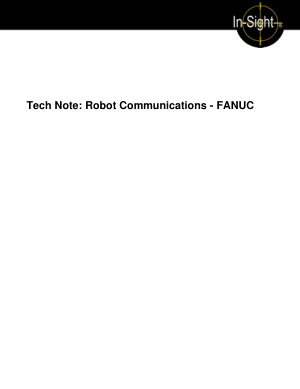Contents
Preface viii
Chapter 1 Metal Forming Processes in Manufacturing 1
1.1 Classification of Manufacturing Processes 1
1.2 Characteristics of Manufacturing Processes 2
1.3 Metal Forming Processes in Manufacturing 4
Chapter 2 Forging Processes: Variables and Descriptions 7
2.1 Introduction 7
2.2 Forging Operation as a System 7
2.3 Types of Forging Processes …………………………………………………..9
Chapter 3 Plastic Deformation: Strain and Strain Rate …………………… 17
3.1 Introduction ………………………………………………………………….. 17
3.2 Stress Tensor …………………………………………………………………. 17
3.3 Properties of the Stress Tensor …………………………………………….. 18
3.4 Plane Stress or Biaxial Stress Condition …………………………………. 19
3.5 Local Deformations and the Velocity Field ……………………………… 20
3.6 Strains …………………………………………………………………………. 20
3.7 Velocities and Strain Rates …………………………………………………. 21
3.8 Homogeneous Deformation ………………………………………………… 21
3.9 Plastic (True) Strain and Engineering Strain …………………………….. 23
Chapter 4 Flow Stress and Forgeability ………………………………………. 25
4.1 Introduction ………………………………………………………………….. 25
4.2 Tensile Test …………………………………………………………………… 27
4.3 Compression Test ……………………………………………………………. 29
4.4 Ring Test ……………………………………………………………………… 35
4.5 Torsion Test ………………………………………………………………….. 36
4.6 Representation of Flow Stress Data ………………………………………. 36
Appendices (CD-ROM only)
4.1 Determination of Flow Stress by Compression Test at Room
Temperature
4.2 Determination of Flow Stress at High Temperature
4.3 Forgeability and Damage Factor in Cold Forging
Chapter 5 Plastic Deformation: Complex State of Stress and
Flow Rules …………………………………………………………….. 51
5.1 State of Stress ………………………………………………………………… 51
5.2 Yield Criteria …………………………………………………………………. 52
5.3 Flow Rules …………………………………………………………………… 55
5.4 Power and Energy of Deformation ……………………………………….. 56
5.5 Effective Strain and Effective Strain Rate ……………………………….. 57
Chapter 6 Temperatures and Heat Transfer …………………………………. 59
6.1 Introduction ………………………………………………………………….. 59
6.2 Heat Generation and Heat Transfer in Metal Forming Processes …….. 59
6.3 Temperatures in Forging Operations ……………………………………… 60
6.4 Measurement of Temperatures at the Die/Material Interface ………….. 60
6.5 Measurement of Interface Heat Transfer Coefficient …………………… 62
6.6 Influence of Press Speed and Contact Time on Heat Transfer ………… 64
Appendices (CD-ROM only)
6.1 Upset Forging of Cylinders
Chapter 7 Friction and Lubrication …………………………………………… 67
7.1 Introduction ………………………………………………………………….. 67
7.2 Lubrication Mechanisms in Metal Forming ……………………………… 68
7.3 Friction Laws and Their Validity in Forging …………………………….. 69
7.4 Parameters Influencing Friction and Lubrication ……………………….. 69
7.5 Characteristics of Lubricants Used ……………………………………….. 70
7.6 Lubrication Systems for Cold Forging …………………………………… 70
7.7 Lubrication Systems for Warm and Hot Forging ……………………….. 73
7.8 Methods for Evaluation of Lubricants ……………………………………. 74
Appendices (CD-ROM only)
7.1 Ring Compression Test
7.2 Double Cup Extrusion Test
Chapter 8 Inverse Analysis for Simultaneous Determination of
Flow Stress and Friction ……………………………………………. 83
8.1 Introduction ………………………………………………………………….. 83
8.2 Inverse Analysis in Metal Forming ……………………………………….. 83
8.3 Flow Stress Determination in Forging by Inverse Analysis …………… 85
8.4 Inverse Analysis for Simultaneous Determination of Flow Stress
and Friction …………………………………………………………………… 86
8.5 Example of Inverse Analysis ………………………………………………. 86
Chapter 9 Methods of Analysis for Forging Operations …………………… 91
9.1 Introduction ………………………………………………………………….. 91
9.2 Slab Method of Analysis …………………………………………………… 93
9.3 Upper Bound Method and Its Application to Axisymmetric
Upsetting ……………………………………………………………………… 97
9.4 Finite Element Method in Metal Forming ……………………………….. 98
Chapter 10 Principles of Forging Machines …………………………………107
10.1 Introduction …………………………………………………………………107
10.2 Interaction between Process Requirements and Forming
Machines ……………………………………………………………………107
iv / Cold and Hot Forging: Fundamentals and Applications
© 2005 ASM International. All Rights Reserved.
Cold and Hot Forgings: Fundamentals and Applications (#05104G)
www.asminternational.org
www.Techbooksyard.com
10.3 Load and Energy Requirements in Forming ……………………………108
10.4 Classification and Characteristics of Forming Machines ……………..110
10.5 Characteristic Data for Load and Energy ……………………………….111
10.6 Time-Dependent Characteristic Data ……………………………………112
10.7 Characteristic Data for Accuracy ………………………………………..112
Chapter 11 Presses and Hammers for Cold and Hot Forging ……………115
11.1 Introduction …………………………………………………………………115
11.2 Hydraulic Presses ………………………………………………………….115
11.3 Screw Presses ………………………………………………………………131
11.4 Hammers ……………………………………………………………………135
Chapter 12 Special Machines for Forging ……………………………………141
12.1 Introduction …………………………………………………………………141
12.2 Transverse or Cross-Rolling Machines …………………………………142
12.3 Electric Upsetters ………………………………………………………….142
12.4 Ring-Rolling Mills …………………………………………………………143
12.5 Horizontal Forging Machines or Upsetters …………………………….144
12.6 Rotary or Orbital Forging Machines …………………………………….145
12.7 Radial Forging Machines …………………………………………………145
Chapter 13 Billet Separation and Shearing ………………………………….151
13.1 Introduction …………………………………………………………………151
13.2 Billet and Sheared Surface Quality ……………………………………..151
13.3 Shearing Force, Work, and Power ……………………………………….154
13.4 Shearing Equipment ……………………………………………………….154
Chapter 14 Process Design in Impression Die Forging …………………….159
14.1 Introduction …………………………………………………………………159
14.2 Forging Process Variables ………………………………………………..160
14.3 Shape Complexity in Forging ……………………………………………164
14.4 Design of Finisher Dies …………………………………………………..165
14.5 Prediction of Forging Stresses and Loads ………………………………169
14.6 Design of Blocker (Preform) Dies ………………………………………171
Appendix A Example of Load for Forging of a Connecting Rod ……………177
A.1 Introduction ………………………………………………………………….177
A.2 Estimation of the Flow Stress …………………………………………….178
A.3 Estimation of the Friction Factor …………………………………………181
A.4 Estimation of the Forging Load …………………………………………..181
A.5 Comparison of Predictions with Data from Actual Forging Trials …..181
Appendices (CD-ROM only)
14.1 Preform Design in Closed Die Forging
14.2 Flash Design in Closed Die Forging
Chapter 15 A Simplified Method to Estimate Forging Load in
Impression-Die Forging …………………………………………..185
15.1 Introduction …………………………………………………………………185
15.2 Effect of Process Parameters on Forging Load ………………………..185
15.3 Methods for Load Estimation ……………………………………………186
15.4 Simplified Method for Load Estimation ………………………………..190
15.5 Example of Load Estimation …………………………………………….191
Contents / v
© 2005 ASM International. All Rights Reserved.
Cold and Hot Forgings: Fundamentals and Applications (#05104G)
www.asminternational.org
www.Techbooksyard.com
Appendices (CD-ROM only)
15.1 ForgePAL: A Computer Program for Estimating Forces in
Hot Forging with Flash
Chapter 16 Process Modeling in Impression-Die Forging Using
Finite-Element Analysis …………………………………………..193
16.1 Introduction …………………………………………………………………193
16.2 Information Flow in Process Modeling …………………………………194
16.3 Process Modeling Input …………………………………………………..194
16.4 Characteristics of the Simulation Code …………………………………196
16.5 Process Modeling Output …………………………………………………197
16.6 Examples of Modeling Applications ……………………………………200
Chapter 17 Cold and Warm Forging ………………………………………….211
17.1 Introduction …………………………………………………………………211
17.2 Cold Forging as a System ………………………………………………..213
17.3 Materials for Cold Forging ……………………………………………….213
17.4 Billet Preparation and Lubrication in Cold Forging of Steel
and Aluminum ……………………………………………………………..214
17.5 Upsetting ……………………………………………………………………215
17.6 Load Estimation for Flashless Closed-Die Upsetting …………………216
17.7 Extrusion ……………………………………………………………………218
17.8 Estimation of Friction and Flow Stress …………………………………221
17.9 Prediction of Extrusion Loads from Selected Formulas ………………222
17.10 Prediction of Extrusion Loads from Model Test …………………….224
17.11 Tooling for Cold Forging ……………………………………………….225
17.12 Punch Design for Cold Forging ………………………………………..227
17.13 Die Design and Shrink Fit ………………………………………………228
17.14 Process Sequence Design ……………………………………………….229
17.15 Parameters Affecting Tool Life …………………………………………230
17.16 Warm Forging …………………………………………………………….233
Appendices (CD-ROM only)
17.1 Examples of Forging Sequences
17.2 Forward Rod Extrusion
17.3 Backward Rod Extrusion
Chapter 18 Process Modeling in Cold Forging Using Finite-Element
Analysis ………………………………………………………………237
18.1 Introduction …………………………………………………………………237
18.2 Process Modeling Input …………………………………………………..237
18.3 Process Modeling Output …………………………………………………239
18.4 Process Modeling Examples ……………………………………………..239
Chapter 19 Microstructure Modeling in Superalloy Forging …………….247
19.1 Introduction …………………………………………………………………247
19.2 Experiments for Microstructure Model Development ………………..247
19.3 Microstructure Model Formulation ……………………………………..248
19.4 Prediction of Microstructure in Superalloy Forging …………………..254
19.5 Nomenclature of Microstructure Model ………………………………..254
vi / Cold and Hot Forging: Fundamentals and Applications
© 2005 ASM International. All Rights Reserved.
Cold and Hot Forgings: Fundamentals and Applications (#05104G)
www.asminternational.org
www.Techbooksyard.com
Chapter 20 Isothermal and Hot Die Forging ………………………………..257
20.1 Introduction …………………………………………………………………257
20.2 Isothermal Forging …………………………………………………………257
20.3 Hot-Die Forging ……………………………………………………………258
20.4 Benefits of Isothermal and Hot-Die Forging …………………………..258
20.5 High-Temperature Materials for Isothermal and Hot-Die Forging ….259
20.6 Equipment and Tooling …………………………………………………..263
20.7 Postforging Heat Treatment ………………………………………………269
20.8 Production of Isothermal/Hot-Die Forging …………………………….271
20.9 Economic Benefits of Isothermal and Hot-Die Forging ………………272
20.10 Summary ……………………………………………………………………273
Chapter 21 Die Materials and Die Manufacturing …………………………277
21.1 Introduction …………………………………………………………………277
21.2 Die and Tool Materials For Hot Forging ……………………………….277
21.3 Heat Treatment …………………………………………………………….285
21.4 Die and Tool Materials for Cold Forging ………………………………285
21.5 Die Manufacture …………………………………………………………..289
21.6 Surface Treatments ………………………………………………………..292
Chapter 22 Die Failures in Cold and Hot Forging …………………………295
22.1 Introduction …………………………………………………………………295
22.2 Classification of Die Failures …………………………………………….295
22.3 Fracture Mechanisms ……………………………………………………..296
22.4 Wear Mechanisms ………………………………………………………….296
22.5 Analytical Wear Models …………………………………………………..297
22.6 Parameters Influencing Die Failure ……………………………………..297
22.7 Prediction of Die Fatigue Fracture and Enhancement of Die Life
in Cold Forging Using Finite-Element Modeling (FEM) …………….307
22.8 Prediction of Die Wear and Enhancement of Die Life Using FEM ..311
Chapter 23 Near-Net Shape Forging and New Developments ……………319
23.1 Introduction …………………………………………………………………319
23.2 Tolerances in Precision Forging …………………………………………319
23.3 Advances in Tool Design …………………………………………………323
23.4 Advances in Forging Machines ………………………………………….326
23.5 Innovative Forging Processes …………………………………………….328
23.6 Future of Forging Technology in the Global Marketplace …………..331
Index ……………………………………………………………………………………337
Preface
Among all manufacturing processes, forging technology has a special place because
it helps to produce parts of superior mechanical properties with minimum waste of
material. In forging, the starting material has a relatively simple geometry; this material
is plastically deformed in one or more operations into a product of relatively complex
configuration. Forging to net or to net shape dimensions drastically reduces metal removal
requirements, resulting in significant material and energy savings. Forging usually
requires relatively expensive tooling. Thus, the process is economically attractive
when a large number of parts must be produced and/or when the mechanical properties
required in the finished product can be obtained only by a forging process.
The ever-increasing costs of material, energy, and, especially, manpower require that
forging processes and tooling be designed and developed with minimum amount of
trial and error with shortest possible lead times. Therefore, to remain competitive, the
cost-effective application of computer-aided techniques, i.e., CAD, CAM, CAE, and,
especially, finite element analysis (FEA)-based computer simulation is an absolute necessity.
The practical use of these techniques requires a thorough knowledge of the
principal variables of the forging process and their interactions. These variables include:
a) the flow behavior of the forged material under processing conditions, b) die geometry
and materials, c) friction and lubrication, d) the mechanics of deformation, i.e., strains
and stresses, e) the characteristics of the forging equipment, f ) the geometry, tolerances,
surface finish and mechanical properties of the forging, and g) the effects of the process
on the environment.
There are many excellent handbooks and technical papers on the technology of the
forging. These principles are reviewed briefly in this book, but major emphasis is on
the latest developments in the design of forging operations and dies. Thus, process
modeling using FEA has been discussed in all appropriate chapters. The subject is
introduced in Chapter 1 with a discussion of the position of metal forming processes
in manufacturing. Chapter 2 considers forging process as a system consisting of several
variables that interact with one another. This chapter also includes an overall review of
the forging operations. The fundamentals of plastic deformation, i.e., metal flow, flow
stress of materials, testing methods to determine materials properties, and flow rules
are discussed in Chapters 3, 4, and 5. Chapters 6 and 8 cover the significant variables
of the forging process such as friction, lubrication, and temperatures. Chapter 9 is
devoted to approximate methods for analyzing simple forging operations. Chapters 10
through 13 discuss forging machines, including machines for shearing and pre-forming
or materials distribution. Process and die design, methods for estimating forging loads,
and the application of FEA-based process modeling in hot forging are discussed in
Chapters 14, 15, and 16.
Chapters 17 and 18 cover cold and warm forging, including the application of FEA
simulation in these processes. Microstructure modeling, using forging of high temperature
alloys as example, is covered in Chapter 19, while Chapter 20 is devoted to iso-
thermal and hot die forging of aerospace alloys. Die materials, die manufacturing, and
die wear in hot and cold forging are discussed in Chapters 21 and 22.
Finally, Chapter 23 reviews the near-net shape forging technology, including enclosed
die forging, multiple-action tooling, and the most recent developments in forging
presses. This chapter also discusses briefly the future of forging technology in the global
economy, the importance of information technology in the forge shop, and, finally, the
need to continuously acquire knowledge on new methods and techniques to remain
competitive.
Several chapters of the book (Chapters 4, 6, 7, 14, 15 and 17) contain appendixes
that consist of presentation slides and computer animations. The animations represent
the results of FEA simulations for various forging operations. They are given in a CD
that is included with this book. The reader is encouraged to use the CD and these
appendixes in order to understand better and easier some of the fundamental issues
discussed in corresponding chapters.
The preparation of this book has been supported partially by the Jacob Wallenberg
Foundation Prize, awarded to Dr. Taylan Altan by the Royal Swedish Academy of
Engineering Sciences. The staff and the students of the Engineering Research Center
for Net Shape Manufacturing (ERC/NSM) of The Ohio State University contributed
significantly to the preparation of the book. Specifically, Mr. Pinak Barve, Graduate
Research Associate, provided valuable assistance in preparing the text and the figures.
Considerable information has been supplied by a large number of companies that support
the forging research and development at the ERC/NSM. On behalf of the authors
and the editors, I would like to thank all who made our work so much easier. Finally,
I would like to thank my wife, Susan Altan, who has offered me enormous support and
encouragement throughout the preparation of this book.






